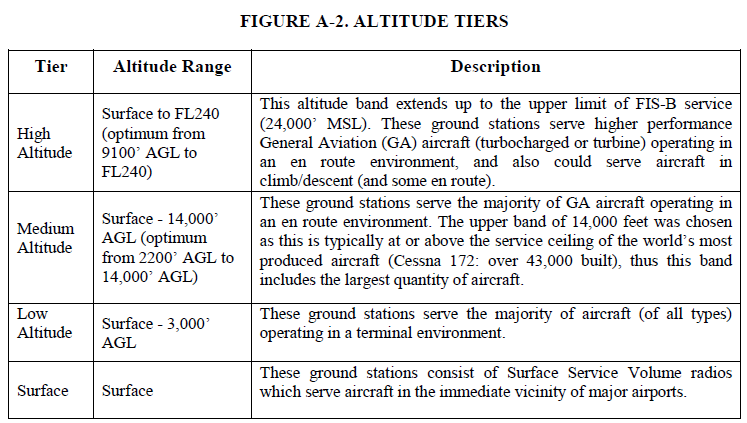ADS-B installations: What you need to know about ADS-B In
In the last installment, we spoke about Automatic Dependent Surveillance-Broadcast Out and how to factor it into your selection of the best ADS-B solution for your aircraft. This time, we will talk about how to select a system based on ADS-B In factors.
ADS-B In
The difference between ADS-B in the United States and the rest of the world is ADS-B In. While the rest of the world exclusively uses ADS-B In (on 1090 MHz) for traffic, the United States created a second ADS-B network on 978 MHz (UAT), which includes both traffic (TIS-B) and weather (FIS-B) data streaming into the cockpit from ground stations. While the Jan. 1, 2020, mandate for ADS-B compliance only applies to ADS-B Out capability, it is ADS-B In that offers you the most bang for your buck while complying with the mandate.
ADS-B In on 1090 MHz includes:
- Traffic, within 15 nautical miles of the aircraft’s position, via Automatic Dependent Surveillance-Rebroadcast (ADS-R, so 978 MHz UAT information) and TIS-B (Mode C, available in areas where TIS-B is available).
- Traffic broadcasting ADS-B Out on 1090 MHz will be received directly, from potentially much greater distances.
ADS-B In on 978 MHz includes:
- Traffic, ADS-R, and TIS-B within 15 nm of the aircraft’s position, and 978 MHz UAT traffic received directly.
- Airmet
- Sigmet
- Convective sigmet
- METAR
- CONUS Nexrad
- Regional Nexrad
- Notam
- Pirep
- Special-use airspace (SUA) status (including TFRs)
- TAF
- Winds and temperatures aloft
- TIS-B service status
Future FIS-B weather products:
- Lightning
- Turbulence
- Icing
- Cloud tops
- Center weather advisory (CWA)
- Graphical airmet (G-Airmet)
Note: The type and detail of the weather products you receive on ADS-B varies based on the ground station you are within range of. Refer to the charts below to learn more about the different stations and the data they send to you in flight.
You would want to select a system that receives 978 MHz (UAT) data with FIS-B weather. However, there is a limitation to only receiving ADS-B on 978 MHz—if you are only listening on 978 MHz, you won’t receive traffic information directly from aircraft transmitting on 1090 MHz. To address this limitation, the ADS-B ground stations do the translation for you and “rebroadcast” the data on both frequencies (ADS-R). The ground stations also broadcast traffic that air traffic control gets from non-ADS-B sources (such as aircraft with only Mode C/S transponders), which is very important at the moment.
As long as you are within range of a ground station, you don’t have to worry about which frequency your system receives on. However, if you are out of range of a ground station, you will only see ADS-B-equipped aircraft broadcasting their positions on frequencies you receive directly. This is why higher-end ADS-B systems transmit on 1090 MHz, but receive on both978 MHz and 1090 MHz. This way, you are guaranteed to at least see all local ADS-B-equipped traffic, regardless of the frequency they are using.
There are several all-in-one ADS-B transponders on the market that offer an internal GPS as the ADS-B position source, and allow you to display the incoming traffic and weather data on an iPad or compatible panel display (compatibility depends on which MFD/GPS or PFD you have installed on the aircraft). Starting at $4,995, Garmin’s GTX 345 combines an internal GPS with 1090 ADS-B Out and dual-band (1090/978) ADS-B In that will display both weather and traffic on a variety of Garmin GPS units, as well as the Garmin G500/600 PFDs and also can stream wireless data for tablet display on apps such as Garmin Pilot or ForeFlight. Another option is Appareo’s Stratus ESG transponder. It’s value priced at $2,995 and has an optional dual-band ADS-B receiver for an additional $500 that will display weather and traffic on ForeFlight, Wing X Pro 7, and Seattle Avionics’s FlyQ. L3 and Freeflight Systems both offer stand-alone ADS-B solutions with integrated Wi-Fi output for tablet display of weather and traffic for under $3,000, but you’ll need a separate transponder.
There are advantages to choosing higher-end ADS-B solutions because they can deliver even more functionality than what ADS-B provides alone. Larry Riddle, vice president of sales and marketing for L3’s general aviation group, refers to this as “breaking the glass ceiling on the transponder.” L3’s Lynx NGT-9000 ADS-B transponder is an all-in-one solution with its own touchscreen display. However, having everything in one box also has allowed L3 to add optional functionality, such as the ADS-B Traffic Advisory System (ATAS) and embedded Terrain Awareness Warning System (eTAWS)—all in the same unit, and using its integral display. This has, quite literally, elevated the transponder to the top of the radio stack in many installations.
Even if you choose an ADS-B Out-only solution, such as upgrading an existing Mode S transponder for ADS-B compliance, you still have options for getting ADS-B traffic and weather using a portable receiver. However, with lower-cost ADS-B options available that include both ADS-B In and Out (including Wi-Fi for display on tablets), portables are becoming a less desirable option.
So, do you choose a low-cost solution that uses your existing transponder and transmits/receives on 978 MHz only, or go for a higher-end solution that transmits on 1090 MHz and receives on both 1090 MHz and 978 MHz? It all depends on how and where you fly, and if you find it acceptable to be reliant on ground stations for a complete picture of local ADS-B traffic. There are a lot of non-ADS-B aircraft out there that you will only see on your ADS-B traffic display if you are within range of a ground station anyway, regardless of what frequency you are receiving on.
Next time, we will talk about options for displaying all that cool traffic and weather data in your cockpit. Until then, happy flying!




